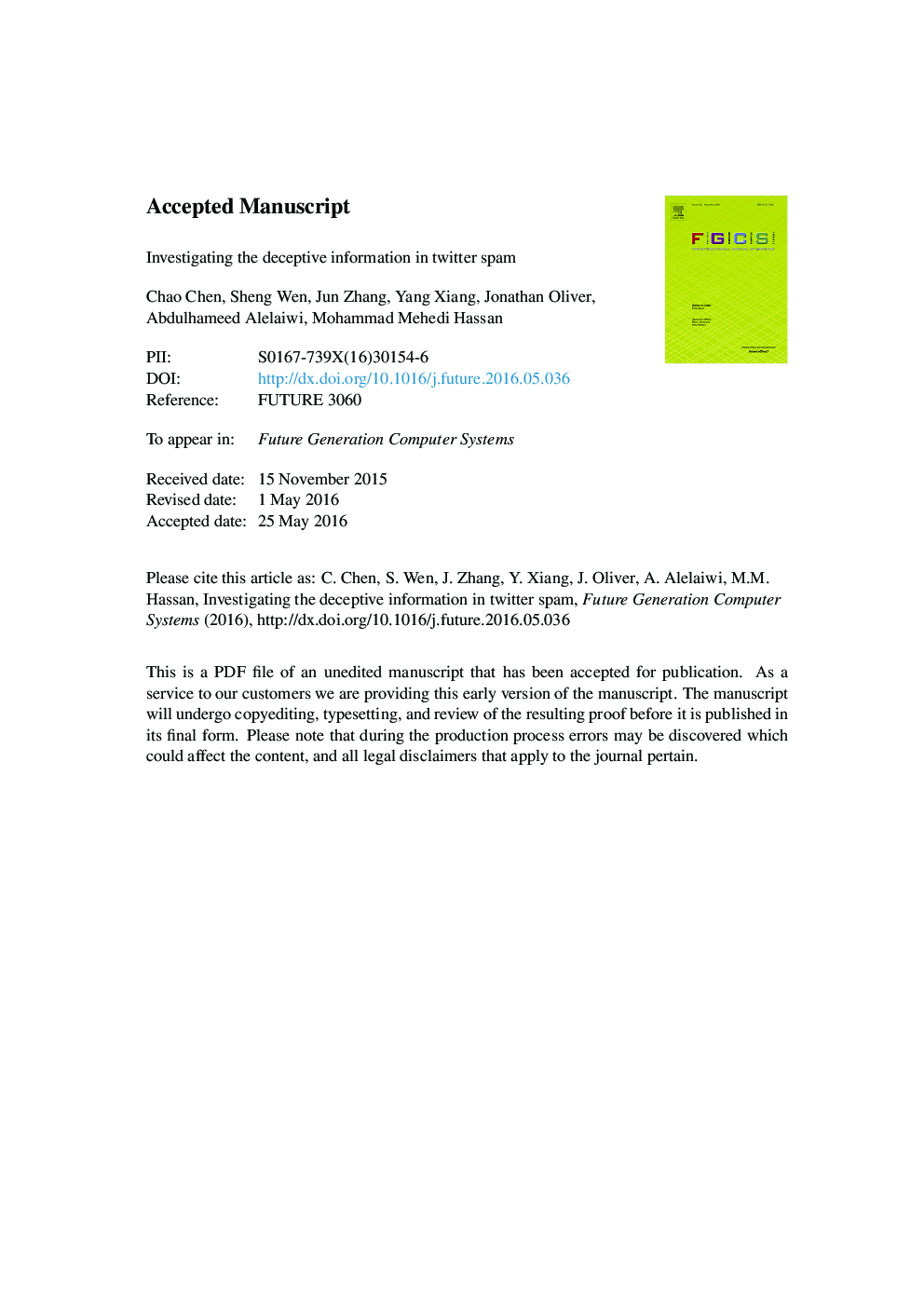| Article ID | Journal | Published Year | Pages | File Type |
|---|---|---|---|---|
| 4950250 | Future Generation Computer Systems | 2017 | 25 Pages |
Abstract
Online Social Networks (OSNs) such as Facebook and Twitter have become popular communication and information sharing tools for hundreds of millions of individuals in recent years. OSNs not only make people's life more connected, but also attract the interest of spammers. Twitter spam generally contains deceptive information, such as “free voucher” and “weight loss advertisement” to attract the interest of victims. A comprehensive analysis on the deceptive information will be of great benefit to the detection of Twitter spam. This paper presents a study of deceptive information in Twitter spam. The analysis is based on a collection of over 550 million tweets with around 6% spam. We find that various deceptive content of spam performs differently in luring victims to malicious sites. We also find the regional response rate to various Twitter spam outbreaks varies greatly. These two factors can contribute to improve the performance of spam detection techniques.
Keywords
Related Topics
Physical Sciences and Engineering
Computer Science
Computational Theory and Mathematics
Authors
Chao Chen, Sheng Wen, Jun Zhang, Yang Xiang, Jonathan Oliver, Abdulhameed Alelaiwi, Mohammad Mehedi Hassan,
